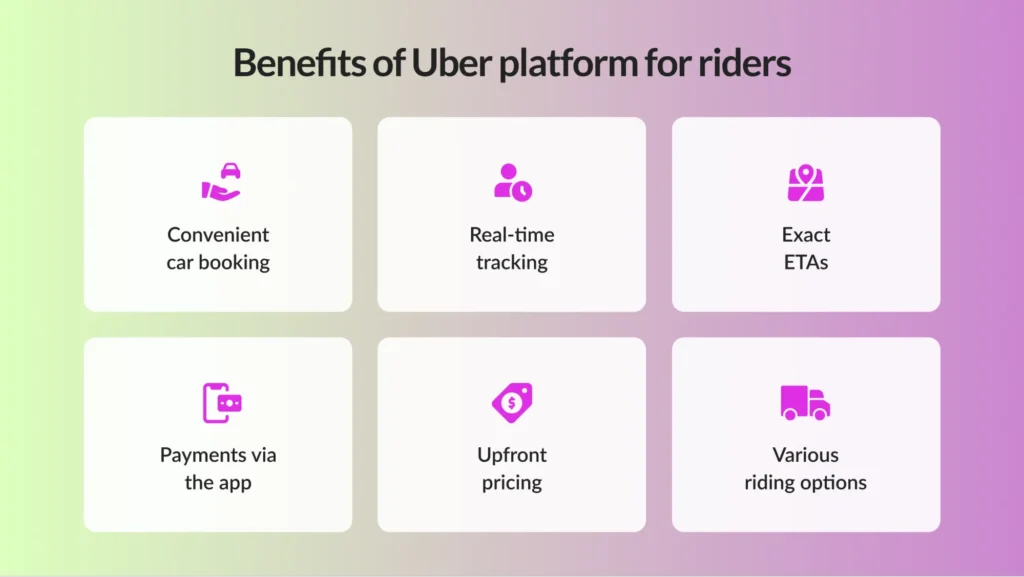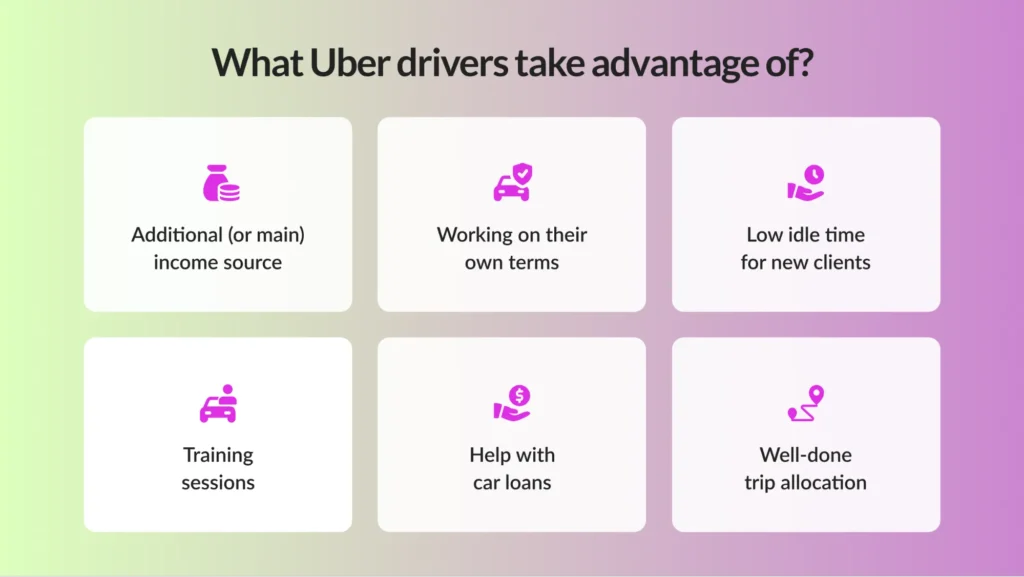How to Start a Business Like Uber: Building Your Own Uber for X Platform
Uber has drastically changed the way we think about traveling and transportation and its success has inspired many entrepreneurs to create their own Uber-like businesses in other industries.
Whether it’s food delivery, house cleaning, or dog walking, the “Uber for X” model has become increasingly popular in recent years.

If you’re interested in starting your own Uber for X platform, there are a few points to consider.
What Is Uber for X?
In recent years, the concept of “Uber for X” has become increasingly popular as a business model for startups and entrepreneurs looking to disrupt traditional industries. But what does “Uber for X” mean, and how does it work?
At its core, the term “Uber for X” refers to a platform or service that connects users with a particular type of service provider. The “X” in the phrase can refer to any industry or service, from transportation (like Uber) to food delivery, laundry services, house cleaning, or even pet care.

The basic idea is that the platform acts as a middleman, connecting customers with service providers in a particular industry. In many cases, these providers are independent contractors who work on a flexible schedule and use their own tools and resources to complete tasks.
So how does an “Uber for X” platform actually work in practice? Let’s take food delivery as an example. A user might download an app that connects them with local restaurants and delivery drivers in their area.
When the user places an order, the app matches them with a nearby driver who can pick up the food and deliver it to their doorstep.
The app might also provide features like real-time tracking of the driver’s location, estimated delivery times, and the ability to rate and review drivers after the delivery is complete.
For drivers, the platform provides a way to earn income by delivering food on a flexible schedule, using their own car or bike.
In some cases, “Uber for X” products may also offer additional features like background checks and safety training for service providers, as well as insurance coverage for both customers and providers in case of accidents or other incidents.
One of the key benefits of the “Uber for X” model is that it can help to streamline and simplify traditionally complex industries.
For example, the traditional process of ordering food delivery might involve calling multiple restaurants, comparing menus, and negotiating delivery times with each individual driver. With an app like Uber Eats or Grubhub, all of those steps are condensed into a single, user-friendly interface.
Another advantage of the discussed model is that it can provide new opportunities for independent workers to earn income.
For drivers, cleaners, and other service providers, these platforms offer a way to work on a flexible schedule, earn money on the side, or even turn their side hustle into a full-time job.
However, “Uber for X” is not without its challenges and controversies. For one, these platforms have faced criticism for their treatment of workers and for their role in disrupting traditional industries.
In many cases, the independent contractors who work for these platforms are not classified as employees, which means they may not be entitled to benefits like healthcare, sick leave, or minimum wage.
Additionally, some traditional industries have pushed back against the “Uber for X” model, arguing that it undermines the quality of service and places unfair burdens on small businesses.
Despite these challenges, the “Uber for X” model shows no signs of slowing down. In fact, many experts predict that we’ll see even more industries disrupted by this approach in the years to come.
Whether you’re a customer looking for a convenient way to order food or book a ride, or a service provider looking for new ways to earn income, the “Uber for X” model offers a unique and innovative approach to connecting people with the services they need.
Uber for X Ideas
The “Uber for X” model has become a popular way for startups and entrepreneurs to disrupt traditional industries and provide innovative solutions for consumers. If you’re considering launching your own “Uber for X” platform, here are some ideas to get you started:
We’ve ensured some potential instances of the popular “Uber for X” ideas that enthusiasts and startups can consider.
By assembling consumers and around service vendors in the product, while delivering adjustable scheduling and convenient features, you get the potential to transform traditional industries and provide innovative solutions for modern consumers. This idea may involve everything from truck app development to dieting and education.
Starting Uber-like Business
This can be an exciting and challenging endeavor. The popularity of the on-demand economy has led to the rise of many successful Uber-like businesses, but launching a new platform requires careful planning, research, and execution.
Here are some key steps to consider when starting an Uber-like business:
Starting an Uber-like business requires hard work, dedication, and a willingness to take risks.
But if you’re able to identify a viable market, conduct thorough research, build a reliable technology platform, acquire drivers/service providers, and execute a strong marketing strategy, you have the potential to build a successful and profitable business that transforms the way people access services.
Uber Revenue Model
The company has disrupted the traditional taxi industry by leveraging technology to create a more convenient, affordable, and accessible service. But how does Uber generate revenue? In this post, we will explore Uber’s revenue model and how it has contributed to the company’s success.

Uber’s revenue model is based on a commission-based approach. The company charges a commission fee for every ride booked through its platform. The commission rate varies based on the type of service provided and the city where the service is offered. The commission fee is usually a percentage of the total fare charged for the ride.
In addition to the commission fee, Uber generates revenue through several other sources:
Uber’s revenue model has been successful due to its ability to leverage technology to create a more efficient and convenient transportation service.
By charging a commission fee on every ride, Uber has created a revenue stream that is directly tied to the volume of rides booked through the platform.
The company’s ability to implement surge pricing, expand its platform to include delivery services, and offer subscription services has further diversified its revenue streams and helped to increase its overall revenue.
The Business Model Canvas
This business model is a strategic management tool that helps entrepreneurs and businesses visualize, design, and analyze their business models.
It was created by Alexander Osterwalder and Yves Pigneur, and it is widely used by startups and established businesses alike to ensure that their business model is comprehensive and effective.
In this post, we will explore the Business Model Canvas in detail and explain how it can be used to create a successful business.
Such a model is composed of nine building blocks that represent the key elements of a business model. These nine building blocks incorporate the following elements:
By filling out each of these building blocks, entrepreneurs and businesses can create a visual representation of their business model and identify potential strengths, weaknesses, opportunities, and threats.
This information can then be used to make strategic decisions about the business and adjust the business model as needed.
As we may summarize, the Uber X model business can be a lucrative opportunity for entrepreneurs who are willing to put in the work and learn the ins and outs of the ridesharing industry.
By following the steps outlined in this article, aspiring business owners can create a successful Uber X business. Don’t forget about researching local regulations, obtaining necessary licenses and insurance, selecting relevant and unique ideas, and setting competitive prices.
It is vital to consider that running any business comes with risks and challenges, but with dedication and a willingness to adapt, entrepreneurs can build a profitable and sustainable Uber X model business.
Author bio:
Yuliya Melnik is a technical writer at Cleveroad. She is passionate about innovative technologies that make the world a better place and loves creating content that evokes vivid emotions.
